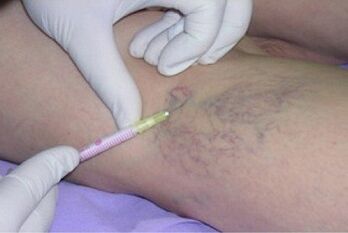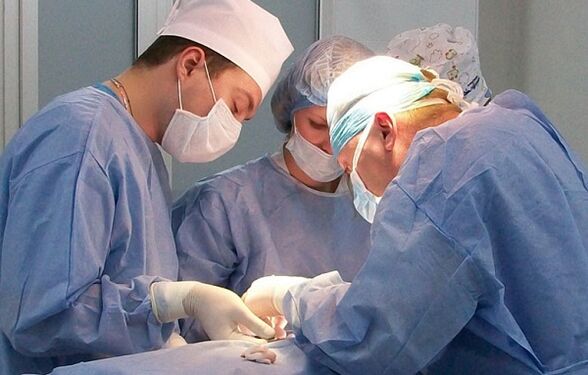
Varicose veins of the lower extremities are a chronic disease that is accompanied by cluster-like vasodilation of the legs. The main causes of varicose veins are hereditary predisposition, excessive exercise, or a sedentary lifestyle. Women are more prone to this disease, especially after giving birth. In representatives of the male genus, varicose veins on the legs can be due to the presence of arterio-venous messages.
At the first signs of varicose veins, which include visible nodular changes in the blood vessels, pain and swelling of the legs and feet, it is advisable to see a doctor. After an examination and a precise diagnosis, the doctor determines how varicose veins on the legs are to be treated in each individual case.
Conservative therapy
Conservative therapy for varicose veins is very diverse and can only reduce the manifestations of this disease, but not cure the cause.
Diet and Compression
Specific exercises for varicose veins that anyone can do at home. They aim to strengthen the leg muscles, which helps keep the veins in good condition. The most effective include:

- Bicycle: Lying on your back, move your legs alternately in a circle.
- Roll a tennis or baseball ball on the floor with your feet. Using a special massage ball can help improve microcirculation.
- Standing on tiptoe is a good workout of the calf muscle, which compresses the varicose veins.
- Swimming with a board helps get all of your leg muscles into excellent physical shape with minimal strain.
An overweight, high-fiber diet that limits the intake of animal fats and carbohydrates will reduce stress on the legs and can be successfully used to treat varicose veins at home.
Knitwear (knee socks, stockings) for the treatment of varicose veins differ in the degree of compression. Often times, in order to properly dress it at home, you need to use special equipment. It is necessary to wear underwear all day and remove it only at night. The principle of action is based on the external compression of the varicose veins of the legs and the improvement of blood flow. Instead of medical jersey, to treat varicose veins, you can use a regular elastic bandage, which is wrapped in a spiral from the fingertips to the middle of the thigh with a heel grip. It is important that the new move overlaps the previous one by at least half.
A pneumatic massager, which is a series of cuffs into which pressurized air is supplied, may be effective in treating varicose veins in the early stages of the disease. In this case, the compression method is used, which improves blood circulation and reduces edema. You can use this device at home.
Medication
It is advisable to treat varicose veins on the legs with ointments and tablets only at the onset of the disease or when complications develop.
The most important drug classes include:
- Verotonics increase the tone of the veins, relieve edema, and improve the outflow of peripheral blood.
- Drugs that improve microcirculation are effective when taken orally or in the form of droppers.
- Antiplatelet agents that prevent blood clots.
- Nonsteroidal anti-inflammatory drugs used to relieve pain and swelling in varicose veins.
The use of all medication must be coordinated with the doctor, as there is a possibility of side effects.
It is impossible to cure varicose veins using traditional methods, you can only slow down the process and postpone the appearance of serious complications, for example, thrombophlebitis.
When an operation is indicated
Surgical treatment for varicose veins does not always involve open surgery. Thanks to modern advances, there is the possibility of outpatient removal of varicose veins in the legs. The following methods of radical treatment are most commonly used:
- Sclerotherapy is based on the introduction of a substance into the lumen of the affected vein, which sticks it together and shuts it off from the systemic circulation. This method is suitable for vessels of small diameter in the initial stages of the disease. The relapse rate reaches 30%.
- Radiofrequency ablation and laser ablation are modern and effective treatments that destroy the inner lining of the vein. It is performed under local anesthesia and does not leave any marks on the skin.
- Phlebectomy - removing a vein directly through small incisions. This method allows you to cure varicose veins, but it gradually fades into the background as the operation is quite traumatic and the rehabilitation time is long.

How conventional medicine can help
Varicose veins of the legs are a fairly common problem, even in pregnant women for whom conventional treatment is contraindicated. It is for this reason that so many recipes of folk remedies have been developed to relieve the manifestations of this disease at home:
- A decoction of ordinary hops is taken in a glass three times a day. To prepare it, you need to take a tablespoon of crushed cones and pour boiling water over them.
- When treating with apple cider vinegar, you need to rub your feet with it every day for a month while drinking a teaspoon of it dissolved in water.
- Sliced green tomatoes or grated raw potatoes can be applied to the hardened buds overnight.
- The substances that make up the horse chestnut have a toning effect on the veins. To prepare a liter of tincture, you need to pour 50 g of inflorescences with vodka for two weeks. Drink 2 tablespoons three times a day.
- To make an effective ointment, you need to take a teaspoon of dry St. John's wort, coltsfoot, chamomile, meadowsweet and chicory, pour 100 ml of water, bring to a boil and mix with badger fat. Apply under a plastic bandage three times a day for a week.
Our grandmothers' recipes are not always effective, but they allow you to treat varicose veins at home when there is no other option. Do not abuse this, it is better to consult a vascular surgeon for examination and treatment.
In the development of varicose veins, a hereditary factor, improper lifestyle and excessive load on the legs play an important role. Exercise and diet can help reduce the chance of this condition and slow the onset of symptoms. But varicose veins can only be cured by surgery after a full examination.














































